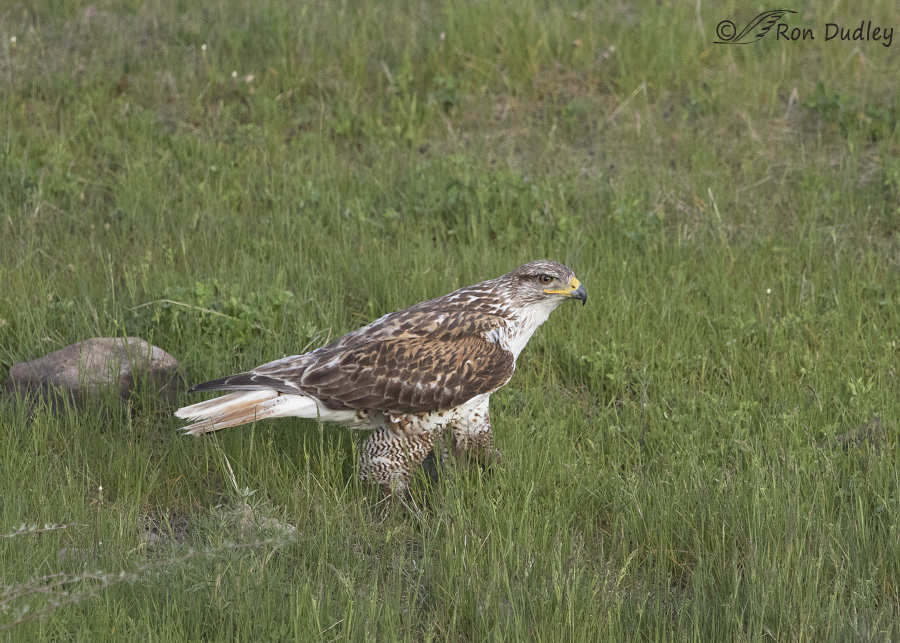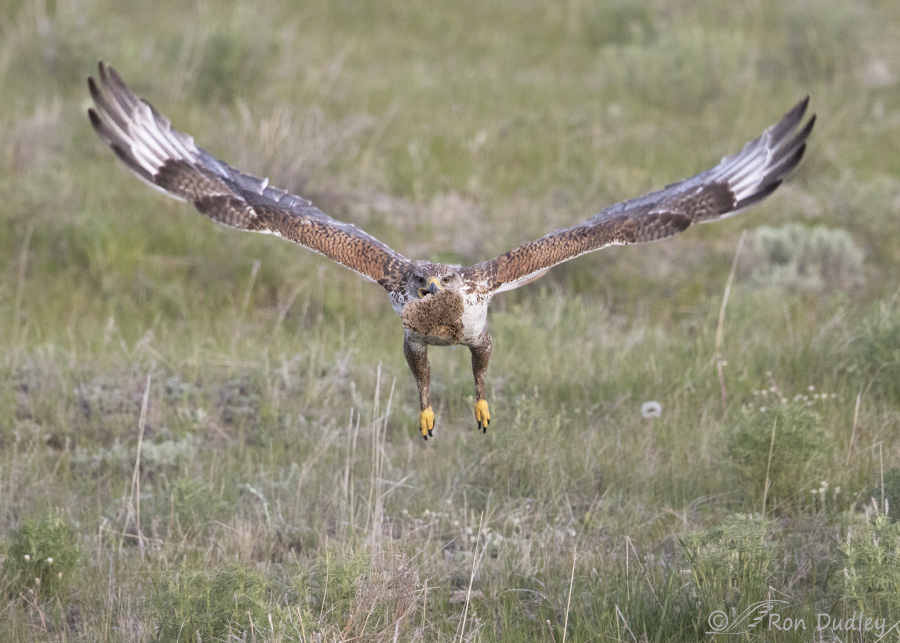Tag: ferrruginous hawk
Ferruginous Hawk In Flight With Atypical Nesting Material
Ferruginous Hawk In Head-on Flight
The Ferruginous Hawk is the largest, most powerful buteo in North America. They have a broad chest, wide gape, large head and long, narrow-tipped wings. Unlike most other buteos they often perch on the ground. Their huge nests, typically constructed in isolated trees or on cliffs, were often constructed of bison bones and wool before the elimination of that massive animal from the western plains. This species is often compared to the Golden Eagle with which it has much in common and they are fully deserving of their apt scientific name, Buteo regalis. 1/4000, f/6.3, ISO 500, 500 f/4, 1.4 tc, natural light, not baited, called in or set up This bird had been perched on an old fence post in Utah’s west desert (background is the Stansbury Mountains) and I was able to capture it in flight soon after it lifted off. I like the blood on the left foot and the somewhat unusual wing position as it took off mostly in my direction. This wing position is seldom seen in photographs because the wing would obscure the head in the much more common side view. Typically these birds don’t take off toward the photographer from a low perch. Ron



